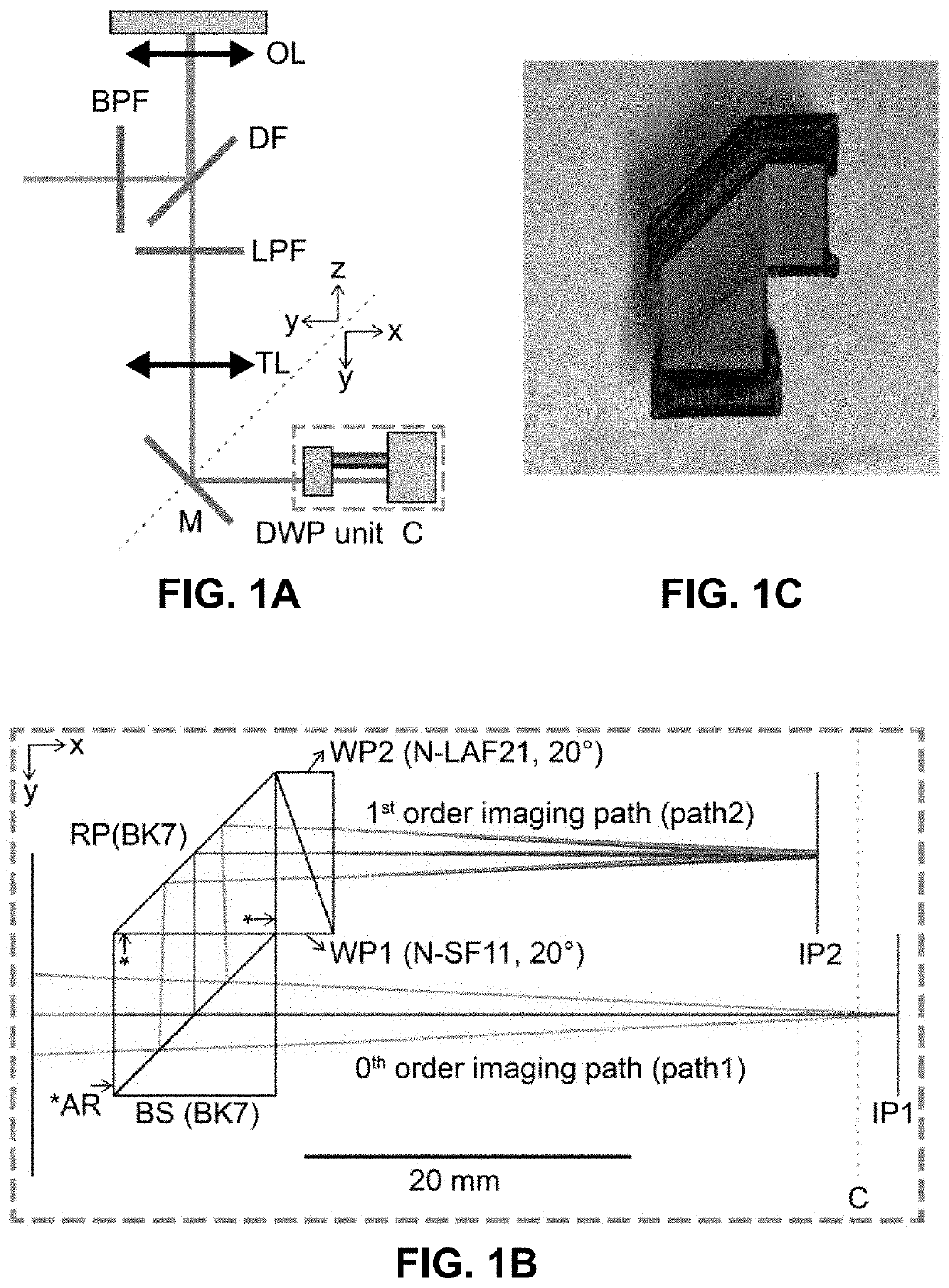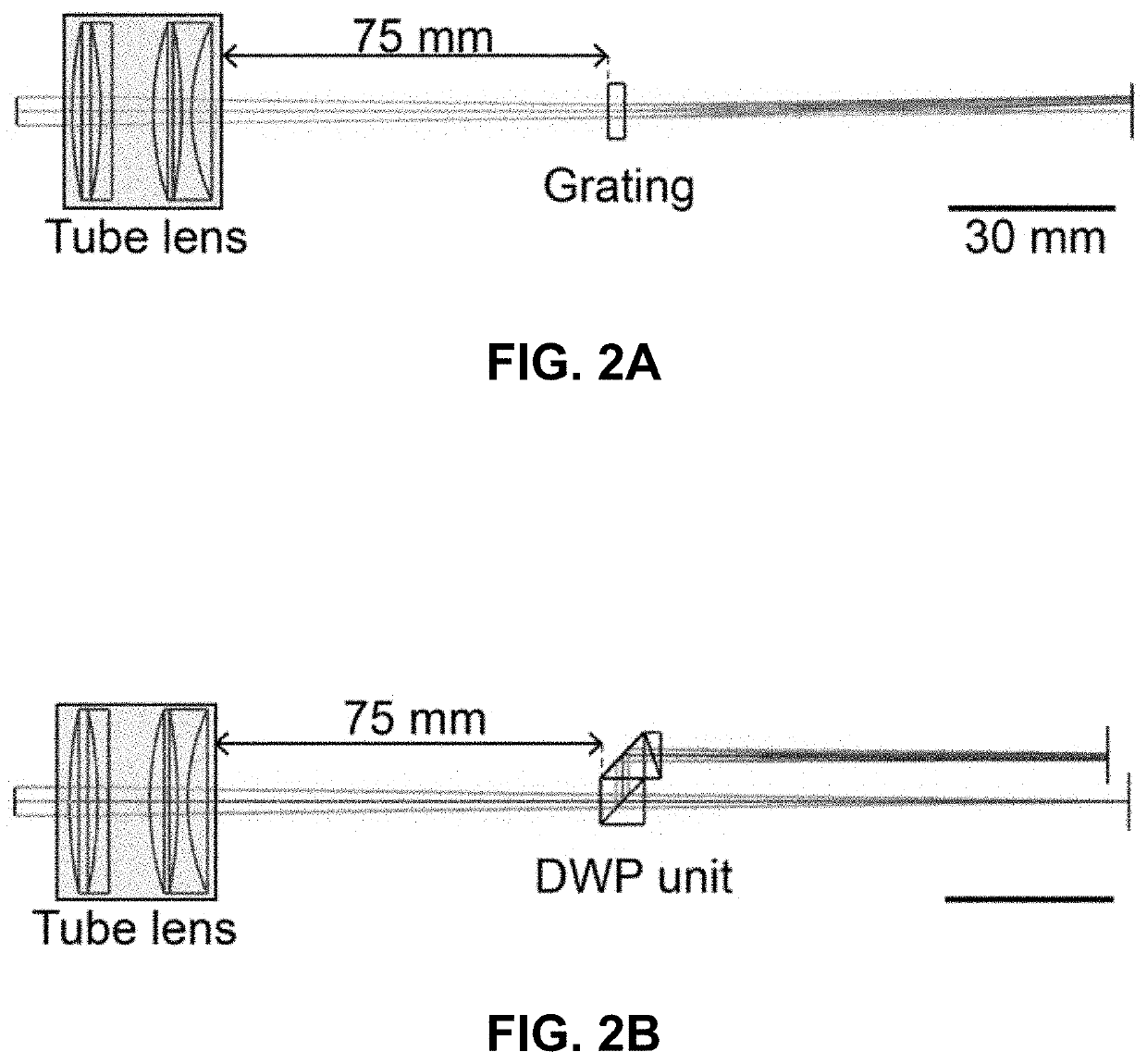Spectroscopic single-molecule localization microscopy
- Summary
- Abstract
- Description
- Claims
- Application Information
AI Technical Summary
Benefits of technology
Problems solved by technology
Method used
Image
Examples
example 1
REFERENCES CORRESPONDING TO EXAMPLE 1
[0113]1 Zhang, Z., Kenny, S. J., Hauser, M., Li, W. & Xu, K. Ultrahigh-throughput single-molecule spectroscopy and spectrally resolved super-resolution microscopy. Nat Methods 12, 935-938, doi:10.1038 / nmeth.3528 (2015).[0114]2 Mlodzianoski, M. J., Curthoys, N. M., Gunewardene, M. S., Carter, S. & Hess, S. T. Super-Resolution Imaging of Molecular Emission Spectra and Single Molecule Spectral Fluctuations. PLoS One 11, e0147506, doi:10.1371 / journal.pone.0147506 (2016).[0115]3 Comtet, J. et al. Wide-Field Spectral Super-Resolution Mapping of Optically Active Defects in Hexagonal Boron Nitride. Nano Letters 19, 2516-2523, doi:10.1021 / acs.nanolett.9b00178 (2019).[0116]4 Dong, B. et al. Super-resolution spectroscopic microscopy via photon localization. Nat Commun 7, 12290, doi:10.1038 / ncomms12290 (2016).[0117]5 Bongiovanni, M. N. et al. Multi-dimensional super-resolution imaging enables surface hydrophobicity mapping. Nat Commun 7, 13544, doi:10.1038 / n...
example 2
REFERENCES CORRESPONDING TO EXAMPLE 2
[0173]1 Zhang, Z. et al. Ultrahigh-throughput single-molecule spectroscopy and spectrally resolved super-resolution microscopy. Nature Methods 12, 935-938 (2015).[0174]2 Dong, B. et al. Super-resolution spectroscopic microscopy via photon localization. Nature Communications 7, 12290 (2016).[0175]3 Bongiovanni, M. N. et al. Multi-dimensional super-resolution imaging enables surface hydrophobicity mapping. Nature Communications 7, 13544 (2016).[0176]4 Zhang, Y. et al. Far-red photoactivatable BODIPYs for the super-resolution imaging of live cells. Journal of the American Chemical Society 140, 12741-12745 (2018).[0177]5 Song, K. H. et al. Three-dimensional biplane spectroscopic single-molecule localization microscopy. Optica 6, 709-715 (2019).[0178]6 Zhang, Y. et al. Multicolor super-resolution imaging using spectroscopic single-molecule localization microscopy with optimal spectral dispersion. Applied Optics 58, 2248-2255 (2019).[0179]7 Lee, J. E. ...
example 3
REFERENCES CORRESPONDING TO EXAMPLE 3
[0206]1. Z. Zhang, S. J. Kenny, M. Hauser, W. Li, and K. Xu, Nat Methods 12, 935-938 (2015).[0207]2. M. J. Mlodzianoski, N. M. Curthoys, M. S. Gunewardene, S. Carter, and S. T. Hess, PLoS One 11, e0147506 (2016).[0208]3. J. Comtet, E. Glushkov, V. Navikas, J. Feng, V. Babenko, S. Hofmann, K. Watanabe, T. Taniguchi, and A. Radenovic, Nano Letters 19, 2516-2523 (2019).[0209]4. B. Dong, L. Almassalha, B. E. Urban, T. Q. Nguyen, S. Khuon, T. L. Chew, V. Backman, C. Sun, and H. F. Zhang, Nat Commun 7, 12290 (2016).[0210]5. M. N. Bongiovanni, J. Godet, M. H. Horrocks, L. Tosatto, A. R. Carr, D. C. Wirthensohn, R. T. Ranasinghe, J. E. Lee, A. Ponjavic, J. V. Fritz, C. M. Dobson, D. Klenerman, and S. F. Lee, Nat Commun 7, 13544 (2016).[0211]6. Y. Zhang, K.-H. Song, B. Dong, J. L. Davis, G. Shao, C. Sun, and H. F. Zhang, Appl. Opt. 58, 2248-2255 (2019).[0212]7. J. L. Davis, Y. Zhang, S. Yi, F. Du, K. H. Song, E. A. Scott, C. Sun, and H. F. Zhang, Langmuir...
PUM
 Login to View More
Login to View More Abstract
Description
Claims
Application Information
 Login to View More
Login to View More - R&D
- Intellectual Property
- Life Sciences
- Materials
- Tech Scout
- Unparalleled Data Quality
- Higher Quality Content
- 60% Fewer Hallucinations
Browse by: Latest US Patents, China's latest patents, Technical Efficacy Thesaurus, Application Domain, Technology Topic, Popular Technical Reports.
© 2025 PatSnap. All rights reserved.Legal|Privacy policy|Modern Slavery Act Transparency Statement|Sitemap|About US| Contact US: help@patsnap.com



